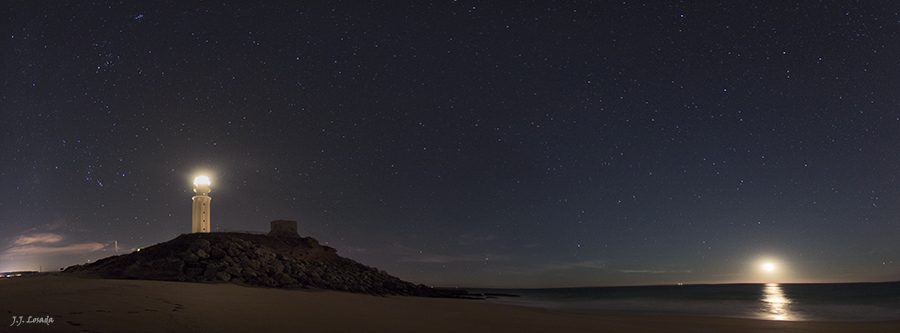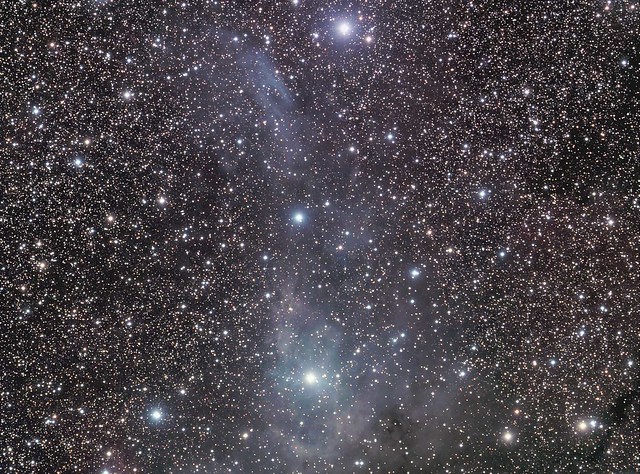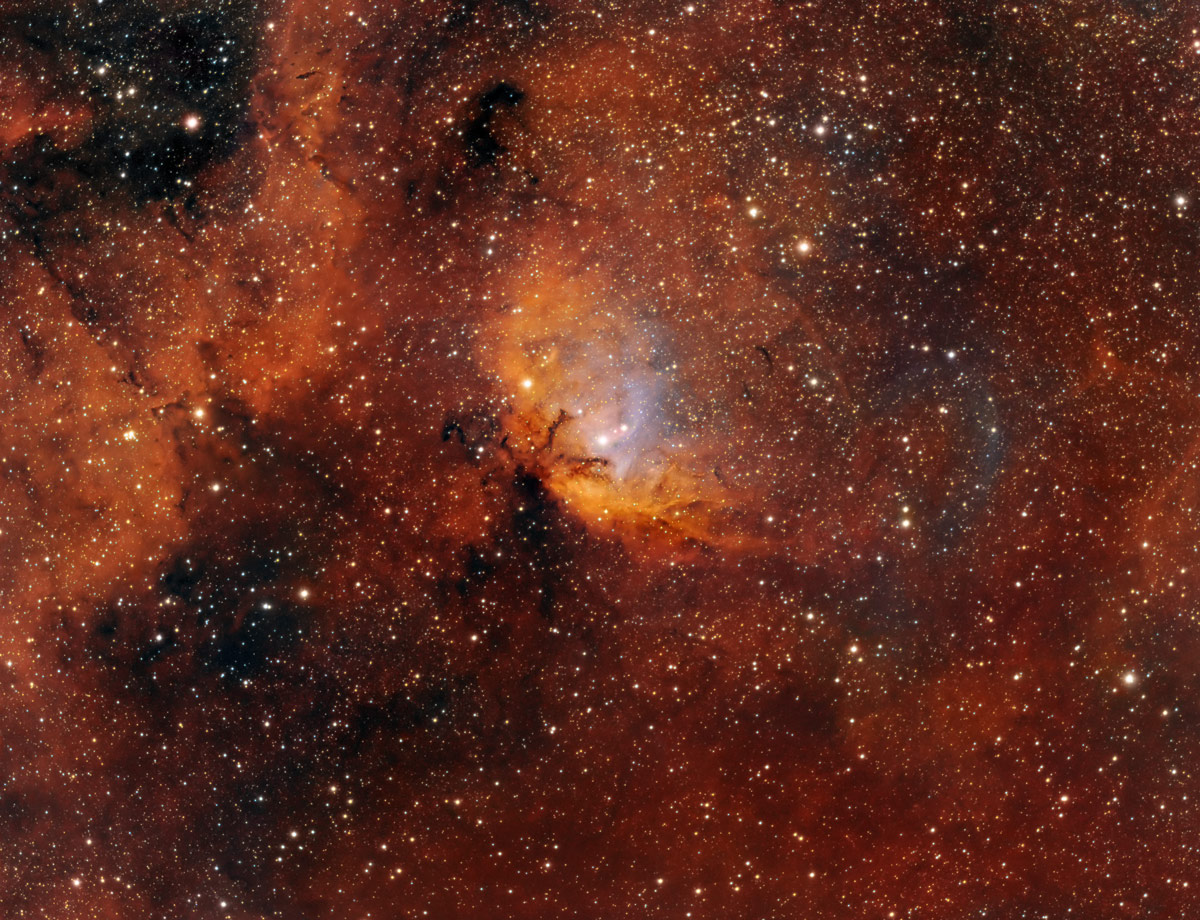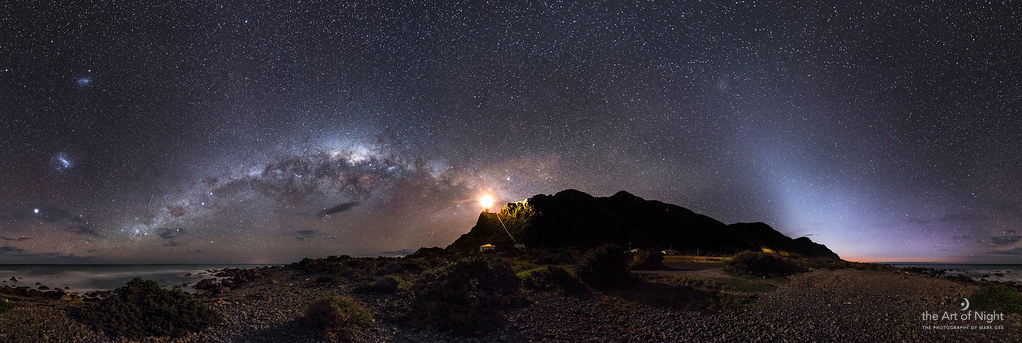Page 8 of 10
Re: Submissions: 2013 November
Posted: Thu Nov 21, 2013 12:00 pm
by Sergio
NGC 2383 and 2384 in Canis Major
A nice pair located in the constellation of Canis Major, close to the limit with Puppis. Both objects cover an area of roughly 13 arc minutes so they might fit in a eyepiece using moderate power.
NGC 2383 is at the left and NGC 2384 at the lower right.
It was supposed these two cluster were related, however recent studies from European Scientists V. Kopchev (*), G. Petrov, (*) P. Nedialkov (**) indicate that the objects deferred considerably in their respective ages and concluded they were born in different environments.
For those interested in the paper
http://www.bjp-bg.com/papers/bjp2006_1_68-72.pdf
(*) Bulgarian Academy of Sciences
(**) Sofia University
Taken from my light polluted backyard 15 km away Buenos Aires, Argentina
Image with higher resolution at
http://www.baskies.com.ar
Best Regards
Sergio
Re: Submissions: 2013 November
Posted: Thu Nov 21, 2013 7:23 pm
by J.J. Losada
Moonset at Trafalgar cape
A difficult to assemble panoramic image. 6 pictures composed taken with a 10mm fisheye lens
Jeronimo Losada

Visit my Webblog:
http://elcieloaldesnudo.blogspot.com.es ... o%20heaven
Re: Submissions: 2013 November
Posted: Fri Nov 22, 2013 5:24 am
by K7VF
Van Den Bergh 14 & 15
Copyright: Jeff Husted
Click here to view larger image and image info:
http://www.flickr.com/photos/cygnusloop/10989195354/
Location: Lone Pine, Ca.
Equipment: Televue NP127is at f4.1; Atik 383L+; Atlas EQ-G.
Processing: Images Plus; AIP4WIN; Registar; PS Elements.
Jupiter - November 21st
Posted: Fri Nov 22, 2013 7:06 pm
by Efrain Morales
Jupiter on November 21st, 06:46ut, 07:28ut under average conditions while it lasted before the rain arrived. Jupiter is now within two months from opposition. R,G,B 55sec. per channel, Lum 45sec.
Equipment: LX200ACF 12 in. OTA, CGE mount, Flea3 Ccd, TeleVue 3x barlows,Astronomik LRGB filter set.
Re: Submissions: 2013 November
Posted: Fri Nov 22, 2013 10:08 pm
by Photonhunter
Tulip-nebula
http://www.photonhunter.at/
Copyright: Patrick Hochleitner
over 18hours RGB-HII-OIII Narrowbandimage!
Full and DATA:
http://www.photonhunter.at/Tulipnebula.html
Re: Jupiter - November 21st
Posted: Fri Nov 22, 2013 11:11 pm
by ViliMax
Efrain Morales wrote:Jupiter on November 21st, 06:46ut, 07:28ut under average conditions while it lasted before the rain arrived. Jupiter is now within two months from opposition. R,G,B 55sec. per channel, Lum 45sec.
Equipment: LX200ACF 12 in. OTA, CGE mount, Flea3 Ccd, TeleVue 3x barlows,Astronomik LRGB filter set.
Beautiful Jupiter again Efrain, congratulations

Re: Submissions: 2013 November
Posted: Fri Nov 22, 2013 11:57 pm
by astrofotografen.se
360 degree aurora virtual experience
http://www.astrofotografen.se
Copyright: Göran Strand

Here's a 360 degree aurora virtual experience I made. The time lapse consists of 2464 raw images for a total data amount of 30Gb that I collected on March 17 this year and it shows the aurora over a 4 hour time span. You can pan around by using the mouse to watch how the aurora unfold.
Re: Submissions: 2013 November
Posted: Sat Nov 23, 2013 4:10 am
by geckzilla
Kind of a cool, obscure thing I found in the HLA. Don't think it's been processed before except for some rather quick images for some scientific literature.
Clouds Around V1331 Cyg
Credit: Hubble Legacy Archive, processing by Judy Schmidt

Re: Submissions: 2013 November
Posted: Sat Nov 23, 2013 7:31 am
by Ann
The star and its surrounding "arcs" are amazingly similar to
V838 Monocerotis.
What filters were used for the picture you processed, geckzilla?
Ann
Re: Submissions: 2013 November
Posted: Sat Nov 23, 2013 12:55 pm
by geckzilla
It's not a light echo, though. I had some data from 9 years apart and there was no change in the cloud structure, just some small movements in the little stars which are visible in infrared. There is more information about filters if you click the image.
PS - I accidentally had Göran's website listed in my credit line because I quoted his post and used the BBCode template. Oops! I didn't mean to do that.

Re: Submissions: 2013 November
Posted: Sat Nov 23, 2013 7:35 pm
by Ann
Re: Submissions: 2013 November
Posted: Sat Nov 23, 2013 8:22 pm
by markg
Guiding Light to the Stars 360
http://theartofnight.com
Copyright: Mark Gee
Photographed at Cape Palliser on the North Island of New Zealand, the featured astronomical objects in this 360 degree seamless pano are: the The Milky Way, the Small Magellanic Cloud, the Large Magellanic Cloud and the Zodiacal Light which extends up from the horizon in the right side of the image.
You can view the full 230 mega pixel resolution image here:
http://www.gigapan.com/gigapans/145198
Small Magellannic Cloud and 47Tucanae
Posted: Sun Nov 24, 2013 9:21 am
by IanP
Small Magellannic Cloud and 47Tucanae
LBN234 / VDB130 / Barnard 344
Posted: Sun Nov 24, 2013 12:38 pm
by avdhoeven
Because of bad weather I started to looking at old data again. I was not so happy with the old HaRGB version of this data so I did a complete reprocessing.
Barnard 344 is a dark nebula in the constellation of Cygnus. It’s located close to the star Sadr in the Gamma Cygni Nebula (RA: 20h18m57.4s DEC: +40º 40′ 01″). Barnard 344 is located on the bottom of the image.
This region is very rich of dark and emission nebulae. On the image also VanDenBergh 130, a reflection nebula in this region, can be seen. It’s the circular cloudshape on the left center of the image. LBN234 is an emission nebula glowing with hydrogen and sulphur in the center of the image.
Barnard 344 was described by Barnard himself as: “Dusky spot, 7′ long; like an arrowhead, pointed SW; small star at NE end”.
This image is a combination of narrowband imagery with RGB images taken during a number of nights in July 2013.
Telescope: TEC-140
Camera: QSI-583
Mount: Skywatcher NEQ-6
H-alpha: 6 x 1800 s (3nm astrodon)
SII: 3 x 1800 s (3nm astrodon)
OIII: 4 x 1800 s (3nm astrodon)
RGB: (4,4,4) x 600 s (astrodon TrueRGB)
Total exposure time: 8.5 hours
Full resolution
A busy night into the jungle!
Posted: Sun Nov 24, 2013 6:33 pm
by conemmil
Two Iridium satellites are passing almost simultaneously in the night sky of Lambarene city in Gabon Africa. I was out to take some images of the nearby storm and couldn't believe in my eyes! Two satellites, Iridium 51 and 7 passing with only 8 seconds time difference and 0.7 degrees distance. In front of the camera is the Ogooue river and on the left the city of Lambarene. The light magnitude of the satellites is -6.5 for both.
I didn't knew that this event can occur in the night sky so it really surpised me! The image was made during my trip to Gabon for watching the Total Solar Eclipse with a Canon 5D and a 14mm f2.8 lens.
Constantine Emmanouilidi
Re: Submissions: 2013 November
Posted: Sun Nov 24, 2013 7:20 pm
by mexhunter
Sadr or
Gamma Cygni is a yellow giant star, about 65,000 times brighter than our Sun Visually complex located in a region of the Milky Way, Sadr is surrounded by diffuse emission nebula IC 1318, illuminated by hot young stars. However, Sadr is not part of the nebula, as it is halfway between it and the Earth, being a foreground star. The open cluster NGC 6910, in the same visual field, is also much more distant.
Copyright: César Cantú
http://www.astrophoto.com.mx/picture.ph ... category/2
Re: Submissions: 2013 November
Posted: Sun Nov 24, 2013 8:49 pm
by Rothkko
grass galaxy. polarizing filter

- Mérida, Spain. 2013-11-24. 2:44 pm
NGC 891 - An Edge on Spiral Galaxy
Posted: Mon Nov 25, 2013 5:31 am
by MikeWiles
I've posted pictures of other galaxies before, showing big sweeping arms around a really tightly packed core of stars. What would one of those galaxies look like from an edge-on view? NGC 891 is a galaxy in the constellation of Andromeda that gives us just such a view. Here are the results of 20 hours of effort with my camera and telescope from the remote observatory in southern Arizona.
It too is a big, spinning spiral galaxy; but it presents us with an edge on view from our line of sight. It shows very well that while these galaxies are big spinning masses of stars, they're also very flat relatively speaking. At its accepted distance of 30 million light years away the galaxy is somewhere around 100,000 light years wide but only a few thousand light years "thick". If we could get outside our own galaxy and look back at it from the same plane, it would look much like this.
The long dark streak running down the center of the galaxy is made up of giant clouds of dust and cold gas that inhabit the spiral arms of the galaxy. What's interesting to me is that an observer/photographer in this galaxy probably has no idea that the Milky Way galaxy is even there. Those dust lanes very likely would prevent them from seeing us. Think about that for awhile.....and enjoy!!
Here's a link to a
full-screen image at Astrobin
Here's a link to the
uncropped, full resolution image, also at Astrobin.
Re: NGC 891 - An Edge on Spiral Galaxy
Posted: Mon Nov 25, 2013 7:38 am
by starsurfer
MikeWiles wrote:I've posted pictures of other galaxies before, showing big sweeping arms around a really tightly packed core of stars. What would one of those galaxies look like from an edge-on view? NGC 891 is a galaxy in the constellation of Andromeda that gives us just such a view. Here are the results of 20 hours of effort with my camera and telescope from the remote observatory in southern Arizona.
It too is a big, spinning spiral galaxy; but it presents us with an edge on view from our line of sight. It shows very well that while these galaxies are big spinning masses of stars, they're also very flat relatively speaking. At its accepted distance of 30 million light years away the galaxy is somewhere around 100,000 light years wide but only a few thousand light years "thick". If we could get outside our own galaxy and look back at it from the same plane, it would look much like this.
The long dark streak running down the center of the galaxy is made up of giant clouds of dust and cold gas that inhabit the spiral arms of the galaxy. What's interesting to me is that an observer/photographer in this galaxy probably has no idea that the Milky Way galaxy is even there. Those dust lanes very likely would prevent them from seeing us. Think about that for awhile.....and enjoy!!
Here's a link to a
full-screen image at Astrobin
Here's a link to the
uncropped, full resolution image, also at Astrobin.
Another really cool thing about this galaxy is a series of Ha filaments near the central dust lane, which have never been revealed in an amateur image yet (due to the lack of Ha exposures)!!
Jupiter, GRS November 24th
Posted: Mon Nov 25, 2013 2:55 pm
by Efrain Morales
Jupiter and the GRS in view On November 24th, 07:14ut. A pronounce oval at the NTrZ region (top Right) and a dark misty cloud just below the GRS in the STrZ region (bottom left) could be seen here.(Equipment: LX200ACF 12 in. OTA, CGE mount, Flea3 Ccd, TeleVue 3x barlows, Astronomik LRGB filter set.
Mars - November 21st
Posted: Mon Nov 25, 2013 2:57 pm
by Efrain Morales
Mars on November 21st 09:01ut. At average conditions and deteriorating due to incoming rain clouds. North is at bottom North polar hood. Top right Valles Marineris Lower bottom left Acidalia Planitia. Within 6 months to opposition. Equipment info on image.
Comet Lovejoy C/2013 R1 On November 21st
Posted: Mon Nov 25, 2013 2:58 pm
by Efrain Morales
Comet Lovejoy C/2013 R1 On November 21st, 08:17-37ut. 20min. total exp. (not croped) Equipment info on image.
Re: Submissions: 2013 November
Posted: Tue Nov 26, 2013 7:10 am
by ADBjester
Topsy Turvy Galaxy NGC 1313
http://www.astrobin.com/full/65772/0/
Copyright: Jeff Woods
Full resolution image at:
http://www.astrobin.com/full/65772/0/
Click on "View" in the upper right, and then on "Full Resolution"
This galaxy is located in the Southern Hemisphere, and is never above the horizon for most of the Northern Hemisphere. It is on the border between Hydrus and Reticulum about halfway between the Large and Small Magellanic Clouds. It is about 13 million light years distant, and is noted for its strikingly uneven shape. Its axis of rotation is not exactly in its center, indicating that its super-massive black hole may not be central to the galaxy. The pink regions in my photo are H-alpha star-forming regions where stars are being born.
Integration:
Lum: 7 hours
RGB: 80 min each
H-A: 4 hours
All exposures UNGUIDED, 300 seconds each (RGB and H-alpha binned 2x2)
FLI-6303E camera
Planewave Ascension HR200 mount
Planewave CDK 20 telescope
Location: Siding Spring, Australia
Jeff Woods
Reading, PA
Re: Submissions: 2013 November
Posted: Tue Nov 26, 2013 1:06 pm
by PauloHS
Re: Submissions: 2013 November
Posted: Tue Nov 26, 2013 2:43 pm
by geckzilla









